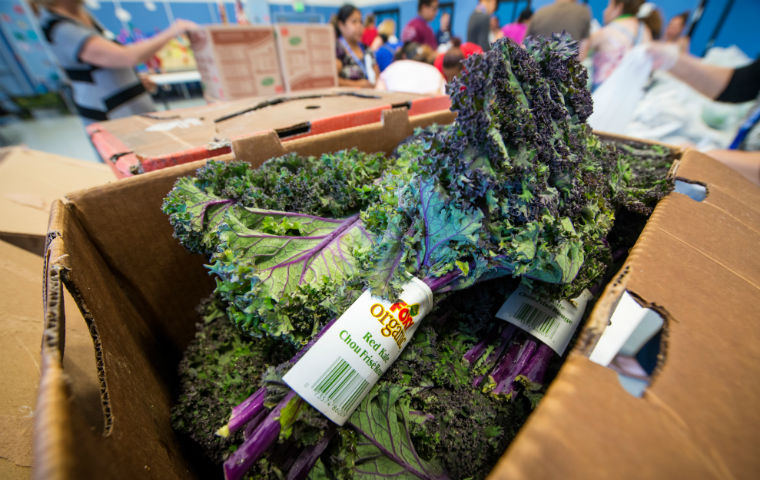
Hunger in Silicon Valley: Improved, but Millions of Meals Still Needed
SANTA CLARA, Calif., Dec. 12, 2019—The Hunger Index of Santa Clara and San Mateo counties declined to its lowest level in five years, thanks to a strengthening economy and herculean work by food providers such as Second Harvest of Silicon Valley.
But the data —from a report prepared by Drew Starbird of Santa Clara University’s Leavey School of Business— also show the pernicious persistency of hunger in one of the world’s richest regions, and the potential vulnerability when the economy weakens.
The most recent Hunger Index —which measures the ratio of meals that cannot be provided for needy families as a percentage of food need—is 23.4 percent, down from a high of roughly 50 percent just after the Great Recession. The latest five-year report encompasses the 2012 to 2017 time frame—the most recent period for which full data is available.
“A hunger index of 23.4 percent, while much improved, means we still need at least 66 million meals to meet the needs of vulnerable households in Santa Clara and San Mateo counties,” said Starbird. “As history clearly shows, an economic downturn will force many households into situations where they can’t afford the food that they need. Our community needs to be ready for that day.”
The full report on the most recent Hunger Index is available online.
Other takeaways from the report:
- Food assistance from Second Harvest of Silicon Valley—the second-largest supplier of food assistance in the two counties after government aid—grew 30 percent between 2012 and 2017. That’s more than any other source of food.
- The proportion of all households that are vulnerable fell to about 21 percent from about 30 percent between 2012 and 2017.
- Eligibility for food assistance varies from one program to another and is based on the federal poverty level. For example, a family of four in California is eligible for Supplemental Nutrition Assistance Program (SNAP) if household income is 200 percent of the federal poverty level (FPL) or about $50,200 in 2017. They would be eligible for Second Harvest of Silicon Valley assistance if household income is 275 percent of the FPL (about $69,000 in 2017).
About Santa Clara University
Founded in 1851, Santa Clara University sits in the heart of Silicon Valley—the world’s most innovative and entrepreneurial region. The University’s stunningly landscaped 106-acre campus is home to the historic Mission Santa Clara de Asís. Ranked among the top 15 percent of national universities by U.S. News & World Report, SCU has among the best four-year graduation rates in the nation and is rated by PayScale in the top 1 percent of universities with the highest-paid graduates. SCU has produced elite levels of Fulbright Scholars as well as four Rhodes Scholars. With undergraduate programs in arts and sciences, business, and engineering, and graduate programs in six disciplines, the curriculum blends high-tech innovation with social consciousness grounded in the tradition of Jesuit, Catholic education. For more information see www.scu.edu.
Media Contact
Deborah Lohse | SCU Media Communications | dlohse@scu.edu | 408-554-5121
Photo courtesy Second Harvest Silicon Valley